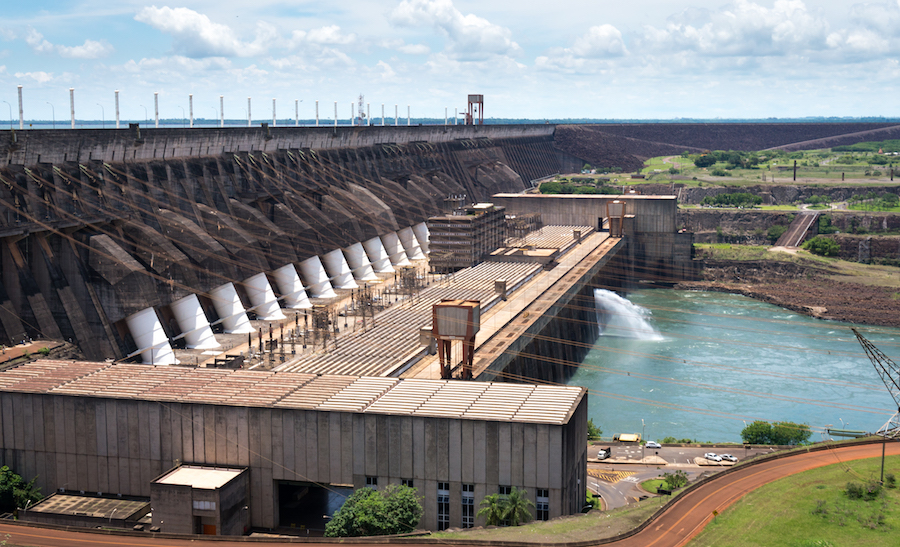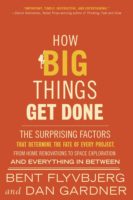Critics from industry and academia are raising questions about studies from the University of Oxford’s Saïd Business School that criticize hydropower-dam megaprojects for chronic cost overruns and as being examples of vulnerable megaprojects. The list of objections includes the research methods—for instance, the authors do not divulge their data set of dams—and broader issues, such as the long-term benefits of large megaprojects.
The first Oxford research study, “Should We Build More Dams? The Actual Cost of Hydropower Megaproject Development” by Atif Ansar, Bent Flyvbjerg, Alexander Budzier and Daniel Lunn, first appeared in 2014 in Energy Policy, a peer-reviewed journal. It looked at 245 dams in 65 countries built between 1934 and 2007. The paper concludes that the true cost of large hydropower dams is too high to be fiscally responsible for most countries. The same research team continued its work on the topic in a 2016 study, called "Big Is Fragile: An Attempt at Theorizing Scale," which identified hydro dams as being the among projects with the highest risks.
Judith Plummer Braeckman, professor of engineering for sustainable development at Cambridge University, is one of a number of engineers offering a rebuttal in an ENR interview last week. “The press release for the Ansar article stated the statistics of the failure of hydropower were so compelling, anyone that was still building hydropower was a fool or delusional,” says Braeckman. “I felt that kind of language wouldn’t be coming out of a place like Oxford University.”
Beyond the language of the study, critics are most concerned about the original data. “The problem with data is, it’s very difficult to know exactly what you’re looking at because a cost figure for a project can include contingencies or finance cost—or not. So, the total cost can mean a lot of different things to a lot of different people,” says Plummer Braeckman. If a good data set of dams is found, it should be released and the study repeated, she says. She’s not alone in her request.
“It is unusual and questionable to withhold data after making a claim on the basis of those data,” says Tom O’Rourke, Thomas R. Briggs professor of engineering at Cornell University. “Given the severity of the claims made with respect to dams and cost overruns and their implications for policy, it is appropriate to make the data available.”
Ansar responded to ENR, saying, “We can’t share the database because we’re using it for more future case studies.” Ansar adds that it was his goal with the study to find accurate numbers for as many dams as possible, and he included every single dam project for which there was reliable data. “We can’t find data for everything,” he says. “Part of it seems [to be] that people are working very hard to erase their footsteps behind them.”
Plummer Braeckman is in the midst of her own study of cost and time overruns of megaprojects and says she can sympathize with the difficulty of finding good data.
“Replication is necessary since Ansar et al. report overruns (e.g., a 96% cost overrun) that are much, much higher than those found by previous authors,” wrote Julian Kirchherr in an email to ENR. Kirchherr is a University of Oxford doctoral scholar whose research focuses on water-resources management and its relationship with rural and regional development. “If an author reports findings that significantly diverge from previous findings, it is good scientific practice to publish all associated data so that the work can be scrutinized,” he noted.
Kirchherr points to the 2000 World Commission on Dams study, which investigated 81 large dam projects around the world and estimated an average cost overrun of 56%. He also cites a 2015 Awojobi & Jenkins study, published in Energy Policy, that analyzed 58 dams financed by the World Bank from 1976 to 2005; that paper found a 27% cost overrun. Finally, Kirchherr cites a 1996 study by Bacon et al. that analyzed 29 dam projects financed by the World Bank from 1965 to 1986; that paper found a 27% cost overrun.
Ansar says his median cost overruns were the same as two of the above papers: 27%. It was only the mean (96%) that diverged. But the mean overrun was cited in the Ansar paper alongside the median and used in a graph, as well.
Outlier Projects Can Skew Results
Showing the mean is unfair because outliers can skew the results, engineers counter. “The mean starts shifting dramatically for long-tail projects, but median is more accurate,” says Brian Sadden, a West Coast engineer who has worked on dam projects. By “long tail” projects, he means outliers—projects that massively deviate from other dams in the data set. “And one or two projects in the Ansar data set—ones which aren’t divulged—were very, very long-tail projects. One showed a cost overrun of over 5,000%,” he adds.
Aside from requesting data transparency, Kirchherr says the conclusion of the paper—that multiple smaller-dam projects are the only economically viable choice, especially for emerging economies—can be reached only if cost is the sole consideration. The Ansar paper states that large dams would usually “face large cost and schedule overruns, seriously undermining their economic viability.”
Kirchherr vehemently disagrees, saying, “Both the benefits and the costs of a dam project need to be studied when assessing a dam’s economic viability.”
Kirchherr adds that the 14.8-GW Itaipu dam, the world’s second-largest power station next to China’s 22.5-GW Three Gorges Dam, provides 78% of Paraguay’s electricity. “Such benefits can be delivered for more than 100 years with dams possibly being the most long-lived energy infrastructures overall,” says Kirchherr, citing the still-functioning Theodore Roosevelt Dam in Arizona, which was completed 105 years ago. “While I do think that many dam projects frequently face significant cost and schedule overruns, 100 years or longer is a lot of time to compensate for these overruns.”
Plummer Braeckman agrees. “I’ve done a lot of work in the energy world, and the argument appears to be that small is beautiful in all cases,” she says. “I would dispute the idea that small is beautiful. It’s not clear that it’s always environmentally or socially beneficial.” She says there’s no clear evidence that 10- or 20-MW power stations are more efficient than 200-MW power stations.
Ansar counters that the paper doesn’t argue that small is always better. “Countries should bite what they can chew,” Ansar responds. “That means big dams are only really viable in bigger economies. Canada can get away with a dam that Pakistan cannot. A big cost overrun in a megadam will cause sovereign debt overrun,” he says.
Another concern regarding the Ansar et al. study is that it reaches too far back into the past, comparing data from 1934 to 2007. “I don’t think it is very telling to look at dam projects that date back many, many decades when one wants to say anything about cost and schedule overruns in contemporary dam projects,” says Kirchherr. He says forecasting has improved over the years and cites the Chinese dam developers, which now construct at least every second dam worldwide, that frequently claim to deliver megaprojects on budget and on time. Plummer Braeckman’s upcoming study looks at dams from 2000 and onward.
Sadden agrees that the industry is getting savvier. Looking back over seven decades doesn’t take into consideration improvements in modern engineering estimating nor compute for socioeconomic unrest. “That covers the Great Depression, world war, the Marshal Plan and a couple of economic collapses around the world,” says Sadden. All the studies cited in this report, including one by Ansar et al., show cost overruns of 27% and upward for large dams.
Ansar defends his paper’s findings, saying that, in many cases, detractors are too close to projects to be unbiased. “It’s hard for [planners] because they’re so zoomed into their specific data point,” he says. “For them to look at the projects from a step away is impossible. It’s their baby, and we’re like doctors looking at the population of babies. That’s the line we draw between our outside view and their inside view.”
Long-Term Benefits
Is this view overly pessimistic? Kirchherr emphasizes that even conventional cost-benefit analyses cannot take into account the 100-year lifetime of some large dams. “It usually only applies a 25-year planning horizon and thus does not appropriately account for the extensive operational timeframe of a large dam project,” he notes.
Both Ansar and Sadden claim the disagreements over mean vs. median and data parsing obscure the more important meaning of the discussion.
For Sadden, that meaning is the argument for the crucial role that megaprojects play in successful economies. In many cases, such as America’s Interstate Highway System or London’s sewer system, which enabled that city’s growth, the projects are the tipping point that allow societies to reach their full potential.
For Ansar, the deeper question is whether large dams are the best means of deploying hydropower, especially for emerging economies. He asks the engineering and construction community to consider other options or employ advanced technology to find alternatives to what he and his data demonstrate are the proven risks of building big dams.




